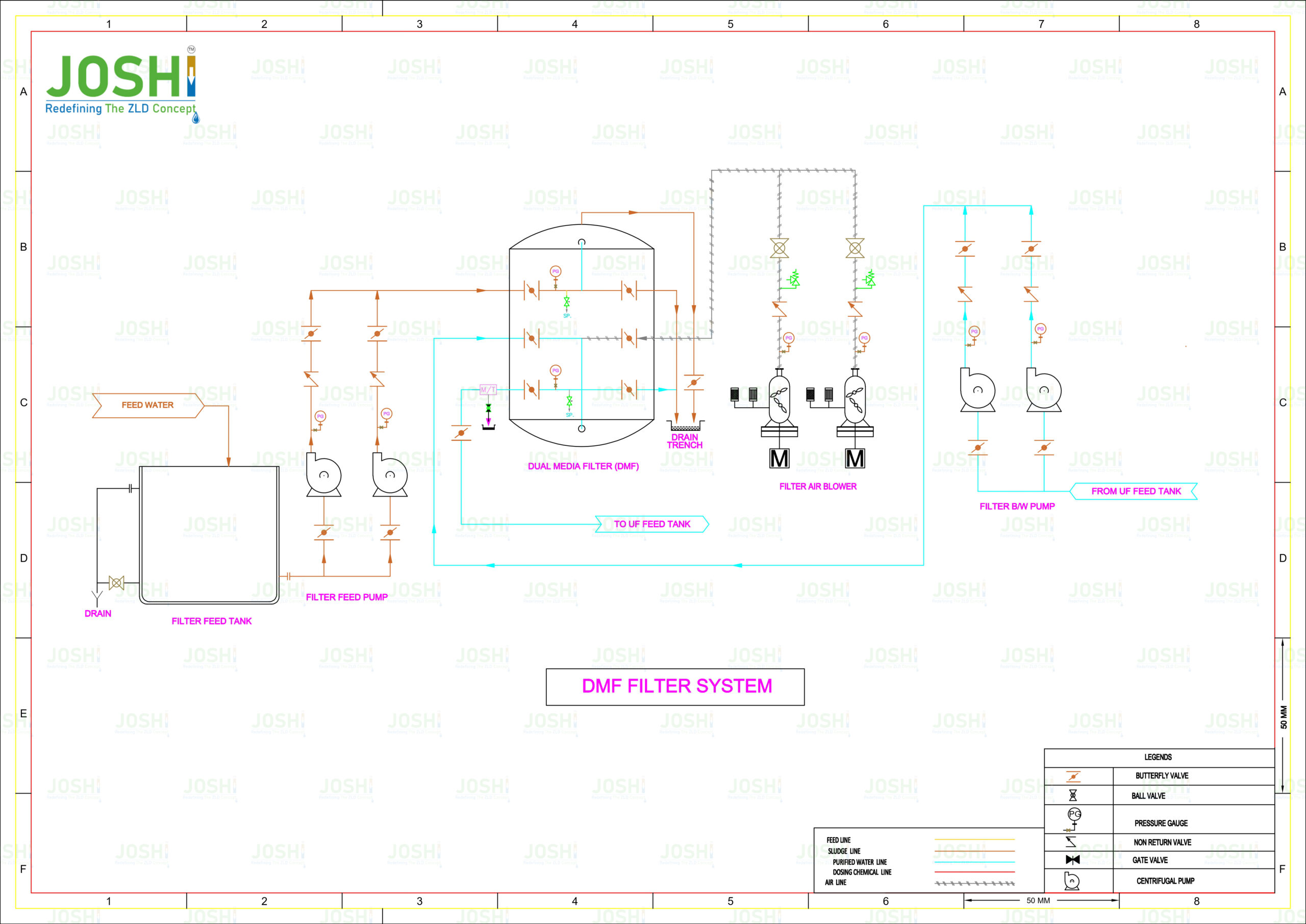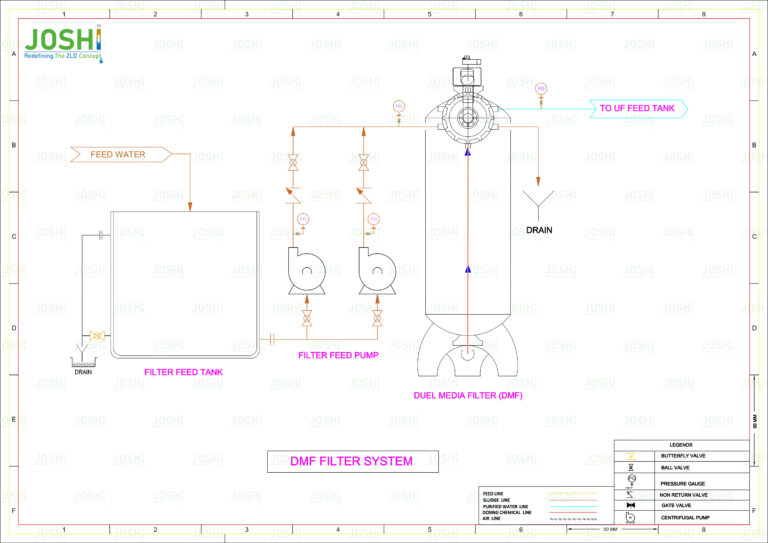DMF - Dual Media Filter
A dual media filter, also known as a multimedia filter, is a type of water treatment system that utilizes two different types of filter media to enhance the filtration process and improve water quality. It is commonly use in industrial, commercial, and municipal water treatment applications.
Process Description
The dual media filter typically consists of a tank filled with two layers of different filter media, arranged in a specific order. The media are chosen base on their particle size, density, and filtration characteristics. The most common combination includes anthracite coal as the upper layer and silica sand as the lower layer, although other combinations may be use depending on the specific requirements
how a dual media filter generally operates
Filtration : Water enters the filter tank and passes through the upper layer of anthracite coal. The anthracite coal layer is coarser and acts as a pre-filter, capturing larger particles and providing a protective layer for the lower sand layer.
Straining and Adsorption: The water then flows through the lower layer of silica sand. The silica sand layer has a smaller particle size and acts as the primary filter media. It effectively removes smaller suspended solids, turbidity, and finer particles that may have passed through the anthracite layer. Additionally, the sand layer may have adsorptive properties that can help remove certain impurities.
Accumulation of contaminants : As water flows through the dual media filter, suspende solids and impurities are trappe within the filter media layers. The accumulate particles form a layer on top of the media, known as the filter cake or the schmutzdecke. This layer enhances the filtration efficiency by further capturing and retaining impurities.
Backwashing : Over time, the filter media can become clogge with accumulated impurities, leading to reduced flow rates and increased pressure drop. To maintain the filter’s effectiveness, a backwashing process is initiate. Backwashing involves reversing the flow of water through the filter, dislodging and removing the trappe impurities from the media. The backwash water, along with the dislodge particles, is discharge out of the system.
Rinse and Return to Service : After backwashing, a rinse cycle follows, during which clean water is pass through the filter to settle the media and remove any remaining debris. Once the rinse cycle is complete, the filter is returne to the filtration mode and is ready to treat water again.
Dual media filters offer several advantages over single media filters. The combination of different media allows for more efficient removal of suspende solids, turbidity, and finer particles. The anthracite layer acts as a pre-filter, reducing the load on the sand layer and prolonging the filter’s operational life. The use of multiple media also results in better filtration performance, higher flow rates, and longer filter run times before backwashing is require.
It’s important to note that the design and specific media selection for a dual media filter can vary depending on the desire water quality goals, flow rates, and other factors specific to the application.
Targeted Impurities
- Suspended Solids
- Turbidity






